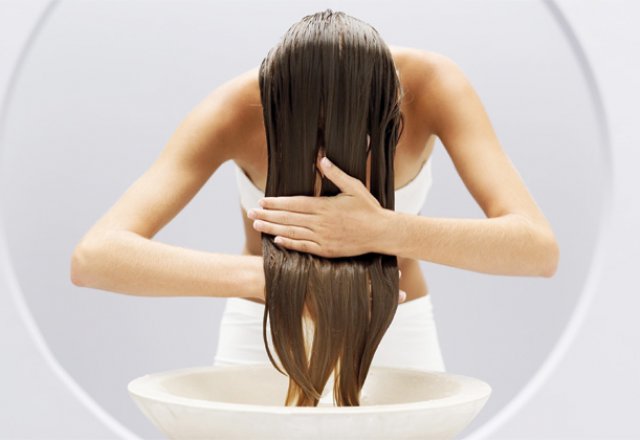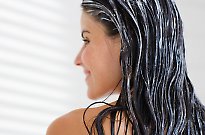
5 eco-friendly hair care tips

Get amazing results with organic products
For both women and men seeking potions that deliver amazing results for the hair and that are organic, sustainable, ethically sourced and free of animal by-products and of animal testing, shopping can be a trying time.
The rocketing market for ecologically friendly goods means some brands indulge in mere ‘green washing’(a PR spin on supposed environmentally friendly products) and it can be hard to tell the good, the well-intentioned, and the downright non-authentic apart from each other.
Sukin and EverEscents are just a couple of the growing clutch of local and global cosmetic companies that have some of the most compassionate hair products around.
As for many other brands, when you’re in a pinch and need to be able to get a good hair product quickly, taking the time to glance at the ingredients first is always a good idea.
1. Read the labels
The label of many a product bottle can be a lesson on ethics and science in one. For instance, additives stearyl alcohol and cetyl alcohol (derived from sperm whales), sodium lauryl sulphate (SLS), the foaming agent linked to excessive scalp irritations, and parabens, linked to cancers in the US, feature prominently in many products that claim to be natural in Australia.
Thankfully, there’s no need for a chemistry degree – organisations such as Animals Australia, Unleashed, PETA and a range of state-based and national vegetarian and vegan websites around Australia have information sheets to help you sort through the chaff.
For vegan and raw food devotees who’d rather create their own preparations, there are a plethora of ingredients from the garden and pantry to use.
Castile soap, herbs such as rosemary and mint, the humble lemon, as well as aloe vera, have long been seen as indispensable for cleansing, while fresh avocado along with oils such as olive, jojoba, and coconut are reputed to be among the best conditioners and scalp treatments.
However, there are a couple of things to consider, such as when and how to use products.
2. Shampoo regularly
Hair care ‘experts’ have for some time warned against washing daily for fear of stripping the hair’s natural oils. SLS may well be the reason that so many people have been in such a lather over how often to shampoo. Now, even though it may sound like modern-day heresy, the rise of products sans SLS means there’s almost no reason to not cleanse more often.
“You’ll get much more benefit from washing hair than if you don’t. It comes down to the seasons, and the activities of the individual, but you should wash and shampoo regularly.
Perspiration, the natural bugs on the scalp, dirt and topical additions can add up to some nasty cocktails that lead to dermatitis, and other itchy, flaky, scalp conditions,” says specialist trichologist Tony Pearce. “You wash your face every day and your scalp is an extension of the face.”
Director of Perfect Potion, herbalist, and author of Do It Yourself Pure Plant Skin Care, Carolyn Stubbin, agrees that shampooing should be done as needed and according to hair type. “If you have dry hair and live in a dry climate, once a week or fortnight could be fine, but if you are exercising regularly, you might want to shampoo daily. It also depends on whether you also use other hair products such as gel or a leave-in conditioner,” she says.
3. Protect your hair with a good conditioner
Pre-shampoo conditioning, post-shampoo conditioning – should you condition at all? Conditioners help counteract any knotting that shampooing causes, as well as the effects of sun, wind, water and dirt on the strands. But, says Tony Pearce, you don’t always need a conditioner.
“Many don’t actually get into the hair shaft, although they do form a protective coating and help smooth it.”
Indeed, women with thin, fine hair may want to avoid potentially overloading their hair while others may find conditioners essential.
“Pre-conditioning is really good for the hair. Otherwise, if you’ve got super-dry, super-thick hair, then following up shampoos and conditioning with a tiny amount of conditioner on damp hair as a leave-in treatment can also help to control frizz,” says Stubbin.
Cold-pressed coconut oil has long been hailed as an excellent product for pre-shampooing. However, because of its richness, Stubbin recommends common sense using it in a hair care routine. “Those with dry, wavy, coarse and curly hair can use just a small amount on the palm of your hand, once a day. But women with fine hair may want to leave it to once a fortnight. Gauge the uses of your oils by your hair type,” she says.
“People from countries that traditionally use coconut oil as part of their grooming, tend to have thicker and longer hair, so someone with super-fine hair needs to use it more sparingly.”
Double the effectiveness of oils by using them in a head massaging program, such as Indian head massage, for smoothing the scalp and helping to alleviate stress – a well-documented factor in weak hair and even hair loss.
4. Stimulate circulation
To boost hair shine and scalp health, there needs to be good blood circulation to the scalp. Stubbin has long advocated herbal rinses, infusions and vinegars for attending to problem scalps and helping to highlight the hair. She says some of the grand old dames are rosemary, to help stimulate circulation camomile or calendula to sooth more sensitive scalps, and a very dilute vinegar rinse, such as apple cider vinegar.
“With diluted vinegar rinses, the acid helps frayed hair cuticles settle back on the hair shaft,” she says. “For those who use apple cider vinegar regularly as a shampoo and conditioner, if it’s really diluted, it shouldn’t be a problem. No more than a teaspoon of vinegar in half a litre of water is fine.”
5. Perfect the finish
Finally, waxes, pomades and gels help give extra control over frizzy hair while hairsprays continue to be employed to hold contemporary coiffs in place. But many products have been frowned upon for adding to the pollution fog that can surround many a hairdressing salon, and some concoctions still feature beeswax.
A good alternative, Stubbin suggests, if you’re making your own at home, is candelilla wax, but “… include shea butter in the mixture to soften it, as it can be brittle.”


